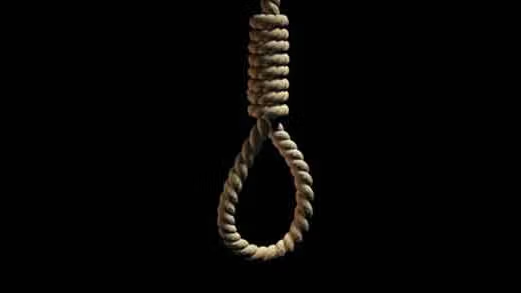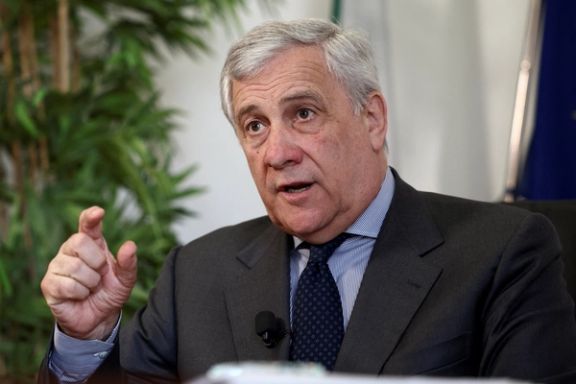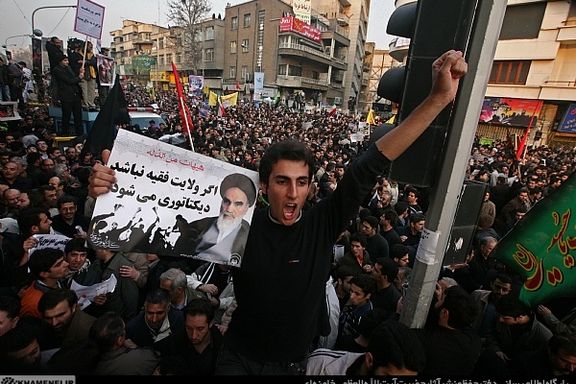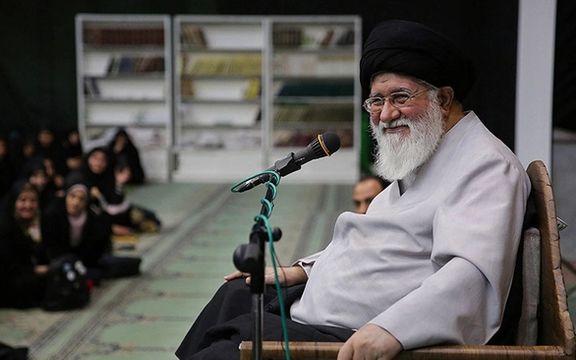Iran executes 15 prisoners on first day of 2025

Since the start of 2025, Iran has executed at least 15 prisoners in various prisons, the US-based Human Rights Activists News Agency (HRANA) reported on Wednesday.

Since the start of 2025, Iran has executed at least 15 prisoners in various prisons, the US-based Human Rights Activists News Agency (HRANA) reported on Wednesday.
Among the executions, which included charges of drug-related offenses and murder, 10 prisoners were hanged in Ghezel Hesar Prison in Karaj. In December, the United States designated the prison, citing its notoriety for the torture and execution of hundreds of dissidents over the years. These executions have heightened concerns about the rising number of death sentences in Iran.
In 2024, Iran carried out 883 executions, marking a sharp annual increase and the highest number in a decade, HRANA reported last week.

Italy’s Deputy PM and Foreign Minister Antonio Tajani announced on X that he’s ordered the Foreign Ministry to summon Iran’s ambassador over the arrest of journalist Cecilia Sala.
“We’re working tirelessly to bring Cecilia Sala home and demand her rights be respected. Cecilia and her family will never be left alone,” he wrote.
Earlier, Il Giornale reported that Milan's Attorney General Francesca Nanni is set to issue her opinion on the release of Mohammad Abedini Najafabadi, an Iranian citizen detained at Malpensa airport on December 16 at the request of the US government.
Three days after Najafabadi’s detention, on December 19, Italian journalist Cecilia Sala was arrested in Iran on vague charges of "violating Iranian law." Her arrest is widely seen as a direct retaliatory move for Najafabadi’s detention.

The 2020 assassination of Quds Force commander Qassem Soleimani set the Iranian government on the road to imminent collapse, a former UK security minister said.
“There are moments like now when the old era is dead, the old illusions are dead, and various things are killing it. And I suspect that the regime in Tehran will be gone in the next few years as well. So I think there’s a real opportunity for freedom to spread and for opportunity to spread,” he said, speaking on the Conflicted podcast on Wednesday.
He attributed the Islamic Republic’s weakening to the fallout from the 2020 US drone strike that killed Qassem Soleimani, a key Iranian military commander, calling it a pivotal moment that disrupted Iran’s influence across the Middle East.
“I’m always struck by how some people can be much more seminal, much more key, pivotal to an organization than you realize at the time. The reality is when Qassem Suleimani was killed in January 2020, he held in his head all the relationships, all the deals for everybody around the region,” he said.
“He was replaced, but he wasn’t really, because nobody could replace the personal 20-year relationships that he held. That’s really the unpicking. So I have to say, I know it’s not popular, but President Trump, effectively, was the trigger that began the fall of the Assad regime.”
Tugendhat highlighted growing dissent within Iran’s Revolutionary Guard Corps (IRGC), where younger members reportedly view the older leadership as corrupt and ineffective. This generational divide, he said, reflects broader frustrations with the Islamic Republic’s inability to maintain its standing both at home and abroad.
“Young members of the IRGC are saying two things. One, the old guard are corrupt and incompetent. That’s why Hezbollah has been hung out to dry and defeated. That’s why old allies like Assad have fallen ... The second thing they’re saying is that they’re hearing rumors, I don’t know how true they are, but they’re hearing rumors that the ayatollah and the government in Tehran wants to talk to the Americans to try and find a way out of this and perhaps hang on.”
He suggested that rumors of potential talks between Tehran and Washington about a new nuclear deal are further fueling tensions within the IRGC, with hardliners fiercely opposing any engagement with the US, particularly after Soleimani’s killing.
Since Soleimani’s death, Iranian officials, including Supreme Leader Ali Khamenei, have repeatedly vowed revenge against the US and those involved in the operation. However, the threats have largely failed to materialize into substantive action, underscoring what Tugendhat described as a diminishing capacity to project power regionally.
In Syria, where Soleimani played a crucial role in sustaining Assad’s government, the situation has shifted dramatically. Tugendhat argued that the West has a unique opportunity to help rebuild the country into a stabilizing force in the region.
“Frankly, if we get Syria right in 10 years, Syria could be absolutely not just a pole of stability but a fantastic economic powerhouse in the region, exporting stability and civilization, as it has done for quite literally tens of thousands of years, to the rest of the world again,” he said.

Tugendhat also criticized the West’s inconsistent policies in the Middle East, which he believes allowed adversaries like Russia to gain influence. He pointed to key moments, such as the US withdrawal from Afghanistan and inaction following Assad’s use of chemical weapons in 2013, as examples of missed opportunities to assert strategic leadership.

As economic protests take place in Iran, the government-sponsored rallies and those organized by its core ultra-hardliner supporters are garnering dramatically less support amid the country's mounting crises.
The turnout for an annual state-sponsored political rally, which took place on December 30, seemed notably lackluster compared to previous years, with reports showing much smaller turnout and a much more subdued tone.
The Islamic Republic finds itself hard pressed by multiple crises, both at home and abroad. Its national currency has fallen by almost 40% since September, while it has been expelled from Syria after rebels captured Damascus.
Dey 9 Rally in Tehran This Year
As in previous years, the state-controlled media claimed that millions attended the rallies in Tehran and other cities. However, despite tight media controls, a report by the Reformist website Ensaf News on December 30 painted a different picture, at least about the rally in the capital.
The report noted that the crowd at Tehran’s Emam Hossein Square, the primary venue for the show of force, filled only about 60 percent of the medium-sized city-center square. Additionally, many attendees reportedly left midway through the ceremony and speeches.
Several people who attended of their own volition, unlike others mobilized by the state and religious organizations, said they were unaware of what the event commemorated.
Looking Back to December 30, 2009
The annual rallies date back to December 30, 2009, when the Islamic Republic mobilized massive crowds nationwide to protest against the anti-establishment Green Movement and its leaders, showing support for Supreme Leader Ali Khamenei who endorsed a controversial decision to announce Mahmoud Ahmadinejad as the winner of the presidential election in June of 2009.
The authorities claimed that tens of millions participated across the country, Khamenei and the state media heralding the turnout as epic. However, the opposition alleged that the government had bussed in government employees, military personnel, students, and residents of smaller towns and villages to inflate the size and impact of the rallies in Tehran and other major cities.
Following the the pro-Khamenei show of force, Green Movement leaders—Mir-Hossein Mousavi, his wife Zahra Rahnavard, and Mehdi Karroubi—were placed under house arrest.
The events of December 30, 2009 marked the end of the harshly suppressed Green Movement protests, and Dey 9 (falls on December 29 or 30 in the Persian calendar) became an annual occasion for those wishing to affirm loyalty to Khamenei.
These state-sponsored rallies, like those on the anniversary of the 1979 Islamic Revolution, are consistently covered extensively by state media and presented as proof of the system's legitimacy.

Vigilantes struggle to organize protests
Ultra-hardliner vigilantes have long been among Khamenei's core supporters and a key part of state-sponsored rallies. However, in recent months, they have struggled to mobilize even small groups on their own to protest against President Masoud Pezeshkian, whom they accuse of deviating from the more conservative agenda of the Islamic Republic and contributing to the country’s economic troubles.
On December 24, only a handful of vigilantes showed up for a protest against the government's decision to unblock WhatsApp and Google Play.

Citizen’s protests and strikes growing under economic pressures
Meanwhile, strikes and protests over fair wages, better working conditions, and payment of overdue salaries have now become a regular occurrence involving workers, retirees, nurses, teachers, and even merchants in the capital, with the likes of the IRGC warning citizens against protesting.
Fearing arrest amid continued crackdowns on protests, demonstrators often avoid strong slogans and direct attacks on top authorities including the Supreme Leader and instead, mainly focus on their economic demands.
On December 29, protests erupted at the Grand Bazaar in Tehran over soaring foreign currency rates and the worsening economic crisis, prompting many merchants to strike.
The strike spread to the nearby Sepahsalar shoe market that same day. The next day, goldsmiths in the Grand Bazaar also went on strike in protest against the economic conditions. Notably, there were no reports of violence against protesters or arrests.
On December 31, labor and retirees protest were reported in several cities across the country.
Notably, despite the presence of security forces at all times, there have not been reports of violence against these protesters recently, reflecting authorities’ concern that cracking down on protesters could trigger a flare-up similar to the 2022 unrest.

The attorney general of Milan, Francesca Nanni, is set to issue her opinion on the release of Mohammad Abedini Najafabadi, an Iranian citizen detained at Malpensa airport on December 16 following a request from the US government, according to Il Giornale newspaper.
Three days after Najafabadi’s detention, on December 19, Italian journalist Cecilia Sala was arrested in Iran on unspecified charges of "violating Iranian law." Her arrest is widely regarded as a direct retaliation for Najafabadi’s detention.
This decision by the Attorney General coincides with complex negotiations between the Italian government and intelligence agencies and their Iranian counterparts to secure Sala’s release.
While Nanni's opinion is formally separate from these discussions, it will determine whether house arrest for Najafabadi would be sufficient to prevent his disappearance while awaiting extradition proceedings to the US. A favorable opinion on Najafabadi’s lawyer’s request could be positively received in Tehran.
Iran has officially confirmed Sala’s arrest, with its state news agency IRNA reporting on Monday that the 29-year-old journalist, who works for Il Foglio and the podcast company Chora Media, was detained for "violating the laws of the Islamic Republic."
US authorities allege that Najafabadi supplied materials for a deadly Iran-linked drone attack on American troops in Jordan.

Prominent Iranian hardline cleric Ahmad Alamolhoda, the Supreme Leader's representative in Khorasan Razavi province, has warned that foreign powers are actively recruiting members of Iran's parliament as spies.
Alamolhoda made the allegations during a meeting in Mashhad with members of the parliament’s Basij on Tuesday.
The Basij is a paramilitary volunteer force under the command of the Islamic Revolutionary Guard Corps (IRGC) that maintains a presence within nearly all Iranian state bodies, including the parliament.
He said that foreign intelligence agencies do not directly send spies into the parliament. Instead, he alleged, they identify lawmakers whose views align with their own and then recruit them through intermediaries.
"In the Islamic Consultative Assembly, people with different ideas and viewpoints enter," Alamolhoda said. "The enemy comes and evaluates these people to see which ones are close to their goals, and then recruits them through several intermediaries."